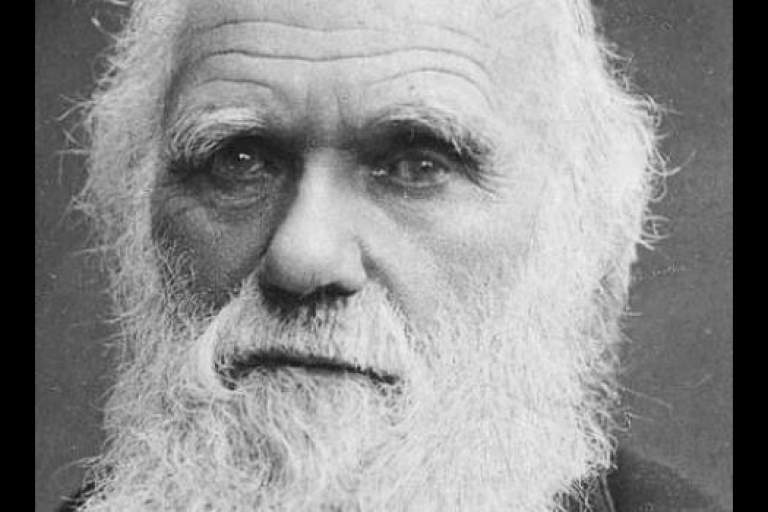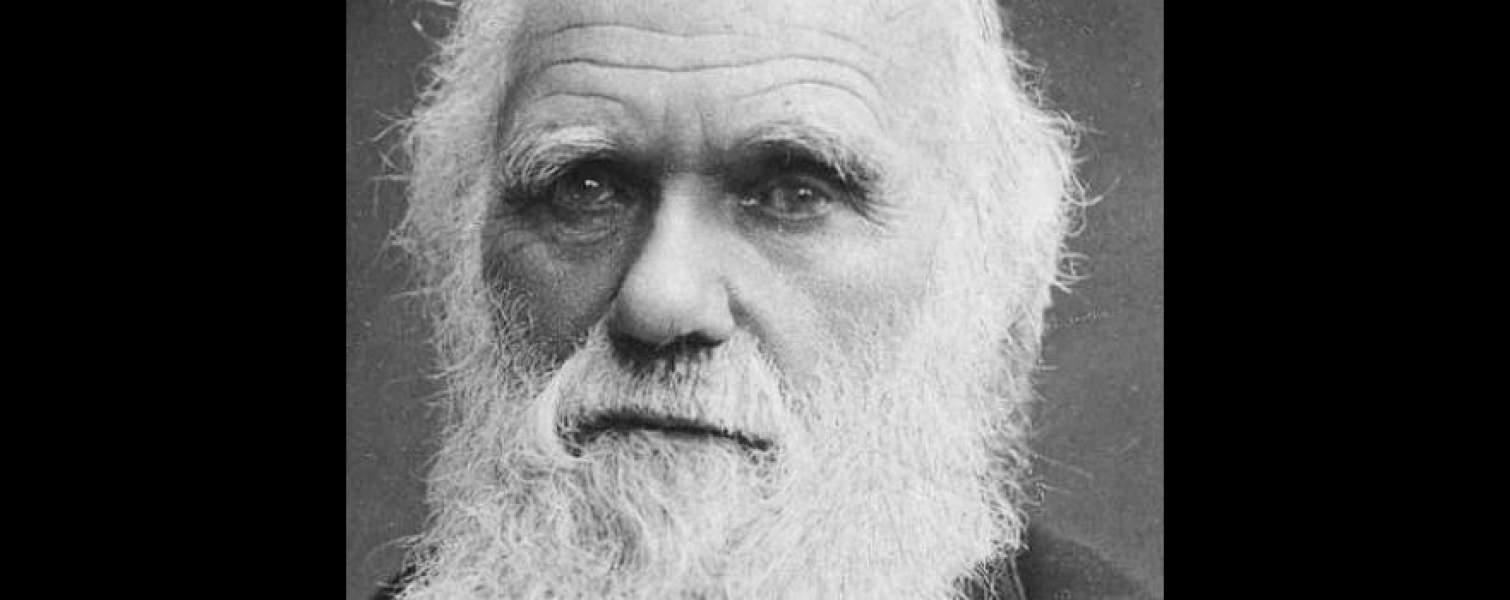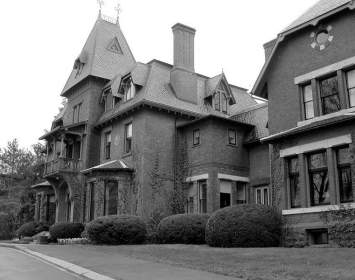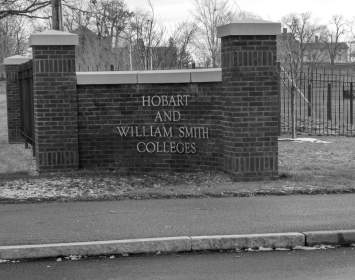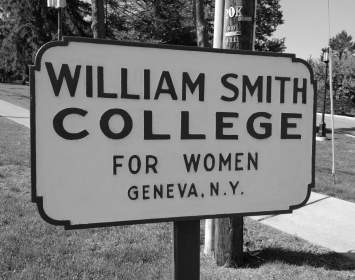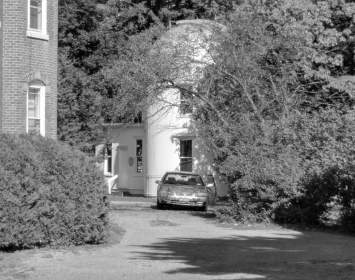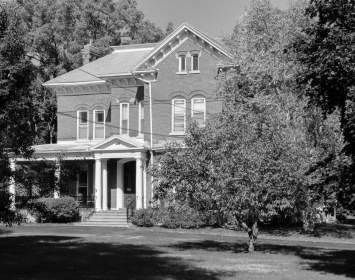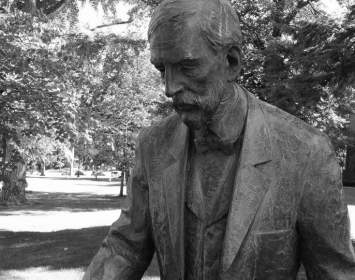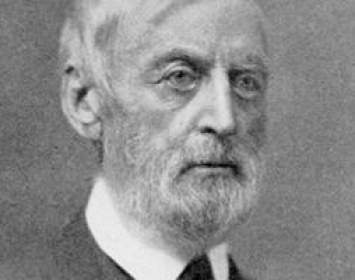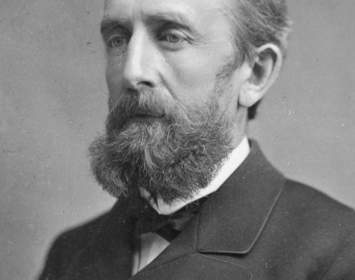For radical reformers of the late nineteenth and early twentieth centuries, scientific knowledge was more than a social and intellectual good in its own right. After Charles Lyell’s Principles of Geology (3 volumes, 1830–1833) made an overwhelming case for the great age of the Earth, and Charles Darwin’s On the Origin of Species (1859) firmly established the theory of evolution through natural selection, scientific knowledge proposed an account of the planet’s origins (and of humanity’s) that was deeply incompatible with the cosmology and biology Christian orthodoxy derived from a literal reading of Genesis. Among the educated, a vigorous debate probed whether—and if so, to what degree—Christianity and scientific knowledge stood in opposition to one another. (Pictured above: Charles Darwin.)
Edward Livingston Youmans, editor of Popular Science Monthly (still published today as Popular Science), solicited scientist and historian John William Draper to write A History of the Conflict Between Science and Religion, the 1874 book that first popularized the “military metaphor” of science and religion as bitter adversaries. Draper depicted science as "not a mere record of isolated discoveries," but rather as one of "two contending powers, the expansive force of the human intellect on the one side, and the compression arising from traditionary faith and human interests on the other." He argued that Protestantism and Roman Catholicism were each resolved to “tolerate no science except such as they considered agreeable to the Scriptures." Nonetheless, Draper singled out Catholicism’s assaults upon science for special odium. A History of the Conflict Between Science and Religion was a vastly influential bestseller. It cemented in the minds of countless reformers the conviction that science and religion were unalterably opposed.
Andrew Dickson White, president of the nonsectarian Cornell University, had previously made a similar point. Firing back at orthodox critics who had assailed Cornell’s lack of denominational affiliation, he delivered a pugnacious lecture on December 18, 1869, in which he indicted religion as the greatest enemy of scientific discovery. The next day’s New York Tribune printed the lecture verbatim. It was widely reprinted. Edward Youmans soon prevailed on White to expand his lecture into a series of articles in Popular Science Monthly. In 1876, White published The Warfare of Science, a revised version of his 1869 lecture in book form. He had softened the lecture’s broad criticism of religion while sharpening its focus; he now indicted “ecclesiasticism,” rather than religion itself, as the chief impediment to scientific discovery. Nor was science the sole victim: “Both Religion and Science have suffered fearfully from unlimited clerical sway,” he wrote; “but of the two, Religion has suffered most.”
White continued to refine his thinking over the next two decades, publishing several editions of expanded or intermediate materials. In 1896, he published his two-volume masterwork, A History of the Warfare of Science with Theology in Christendom. White emphasized that his goal was not to undermine religion but to defend it, “to keep the faith—faith in a Power in the universe good enough to make truth seeking wise and strong enough to make truth telling effective.” He distinguished sharply between religion, which he controversially reduced to the pure love of God and one’s neighbor, and theology, which used the Bible like a scientific text to make unprovable claims about the cosmos. He offered his History as a “warning against basing religious systems on miraculous claims which are constantly becoming more and more discredited and therefore more and more dangerous to any system which persists in using them.”
Given White’s intentions, his method was curious. He wrote that “theological views of science” have “without exception ... forced mankind away from the truth, and have caused Christendom to stumble for centuries into abysses of error and sorrow.” Commitment to free inquiry made a scientist, he argued, and dogmatism a theologian. In florid chapters, White described how the medieval church’s condemnation of usury had hobbled economic development. He offered a romanticized account of Galileo’s travails at the hands of the church. A similar treatment was accorded to Copernicus. Whereas Draper’s History of the Conflict Between Science and Religion had been anti-Catholic in tone, White profiled Protestant failures as well, including belief in witches, the construal of earthquakes and comets as divine portents, and resistance to vaccination. White concluded that Christian theology had “arrested the normal development of the physical sciences for over fifteen hundred years.” For good measure, he charged that beliefs concerning eternal punishment had emboldened contemporary European states to engage in increasingly brazen tortures and inhumane punishments. A History of the Warfare of Science with Theology in Christendom was commercially successful, enjoying numerous printings over some twenty-five years and translations into four languages. Its impact on both scholarly and popular thinking regarding science and religion was immense.
White’s History would be broadly misunderstood. A few clerics grasped White’s intentions and praised the work. But most who lauded it—among them the freethinkers Alexander Graham Bell, Lord Acton, and Andrew Carnegie—dismayingly agreed with critics that it constituted a devastating blow against Christianity. Freethinkers embraced the work; atheist booksellers added it to their lists. Even “the Great Agnostic,” Robert Green Ingersoll, wrote White a letter of praise—though he chided White for his deism. Writing on December 27, 1888, after reading an intermediate publication, "New Chapters of the Warfare of Science," Ingersoll reversed one of White’s most evocative phrases to read: “The only 'power in the universe strong enough to make truth seeking safe,' is man.” In 1905, White would publish a two-volume autobiography in which he struggled yet again to explain what he had meant for his History to achieve.
Writing in 1971, historian Paul Carter declared that A History of the Warfare of Science with Theology in Christendom did as much as any other published work “toward routing orthodoxy in the name of science.” The question whether (or how much) religion and science stand in enmity continues to be subject of debate today. Accommodationists including the late evolutionary biologist Stephen Jay Gould have argued that religion and science occupy non-overlapping magisteria (Gould’s phrase, sometimes denoted by the acronym NOMA) and so do not conflict; freethinkers and other reformers tend to maintain that the "military metaphor" for religion’s stance toward science remains accurate. Andrew Dickson White stands, however inadvertently, as one of the most effective and influential advocates for unbelief.
White's Residence. White’s Cornell residence still stands. The mansion now houses academic offices.
Other Freethinking Champions of Science. Other freethinkers sought scientific knowledge and championed research for its own sake. One such was Geneva philanthropist and partly closeted freethinker William Smith. Smith supported various woman's suffrage events in the Geneva area (nineteenth-century practice was to use the singular, woman's; later practice was to use the plural, women's). He also made the largest single gift toward the purchase of an atheist “revival tent” by minister-turned-freethinker Charles B. Reynolds, and gave his community a grand opera house that still serves as Geneva’s premier performing-arts venue. But he also funded—and built—an astronomical observatory, at which astronomer William R. Brooks made significant discoveries of comets. And of course, in 1906 he founded the William Smith College for Women, a pioneering institution of higher education that offered women a broad liberal education of the sort then normally offered only to men. (The campus’s first custom-erected building was the Smith Hall of Science, opened in 1907.) William Smith College endures today as a coordinate component of Hobart and William Smith Colleges.
One ironic note: the forerunner of Hobart College, the institution’s other coordinate component, was attended by Andrew Dickson White as an undergraduate. He intensely disliked his 1849 freshman year at what was then Geneva College. In his autobiography he described the college as rowdy and unscholarly, and cited his bad experiences there as a motive for his desire to provide a superior model of education at Cornell.
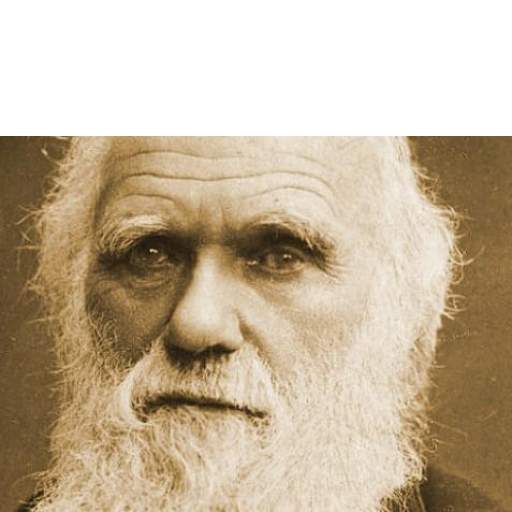
Charles Darwin
Charles Darwin (1809–1822) developed a theory of evolution by natural selection which completed the demolition of traditional Christian concepts, including unchanging species created by divine command in a cosmos only thousands of years oldd.

Andrew Dickson White
Andrew Dickson White (1832–1918) cofounded Cornell University, the first major American university not connected with any religious denomination. Starting in 1869, he developed a model of science and religion in bitter conflict which became hugely influential after the publication of his 1896 masterpiece, A History of the Warfare of Science with Theology in Christendom.
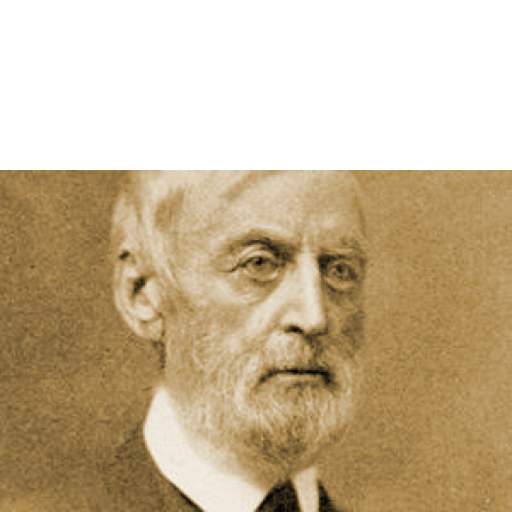
William Smith
William Smith (1818–1912) was an entrepreneur, patron of the arts and sciences, and partly closeted freethinker. In 1888 he built a brick house and a small but capable astronomical observatory next to his own home in Geneva, recruiting astronomer William Robert Brooks to reside there and direct the observatory. Brooks discovered numerous comets from that observatory. Late in his life, Smith was persuaded by Elizabeth Smith Miller and others in her suffragist circle to endow a nondenominational women’s college. Founded in 1906 as the William Smith College for Women, the institution offered a then-revolutionary liberal arts curriculum. It still thrives today as a part of Hobart and William Smith Colleges; its “co-ordinate” structure is unique in American higher education.
Associated Historical Events
Balloon Race Witnessed by Young L. Frank Baum
September 1871
